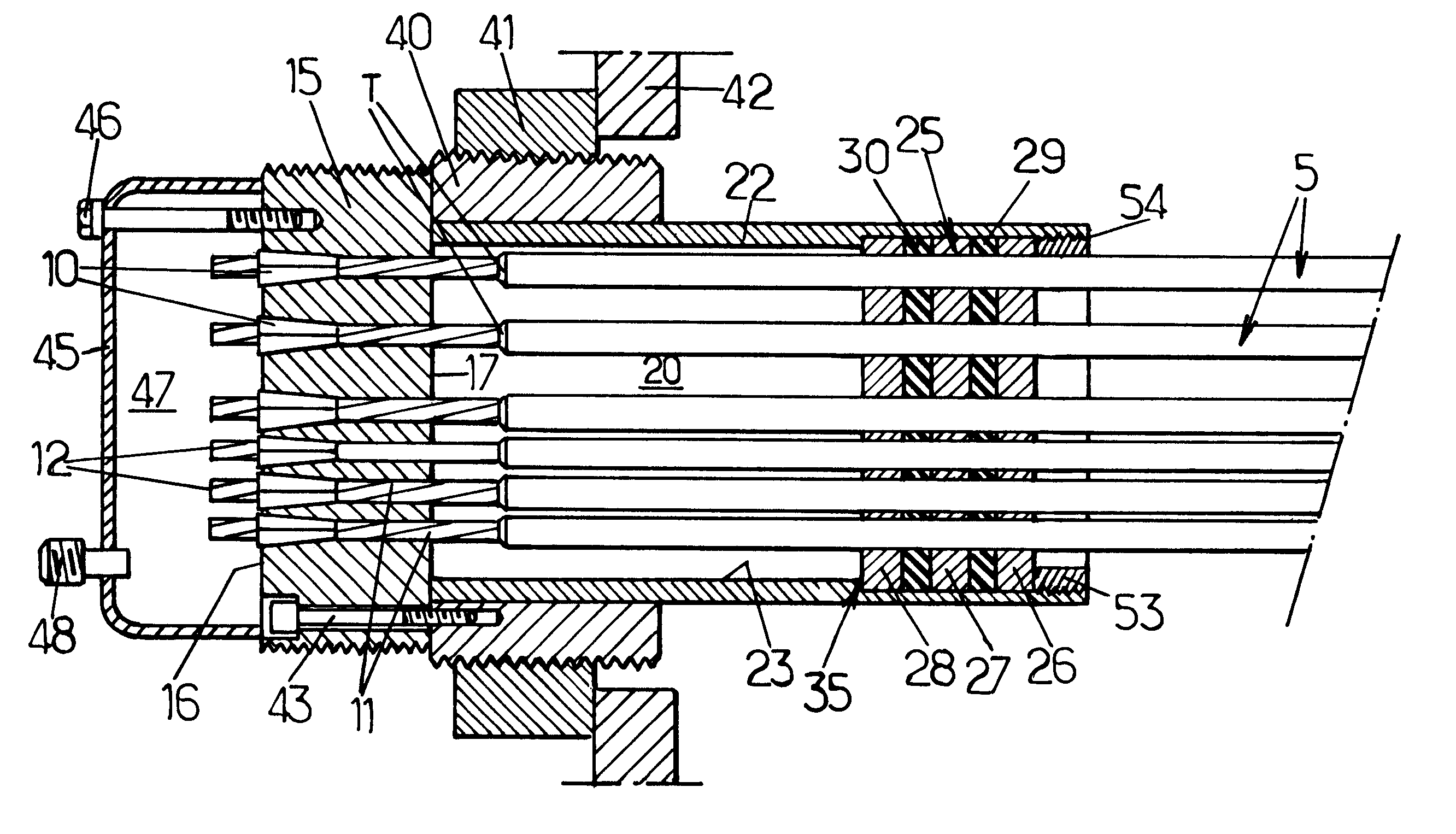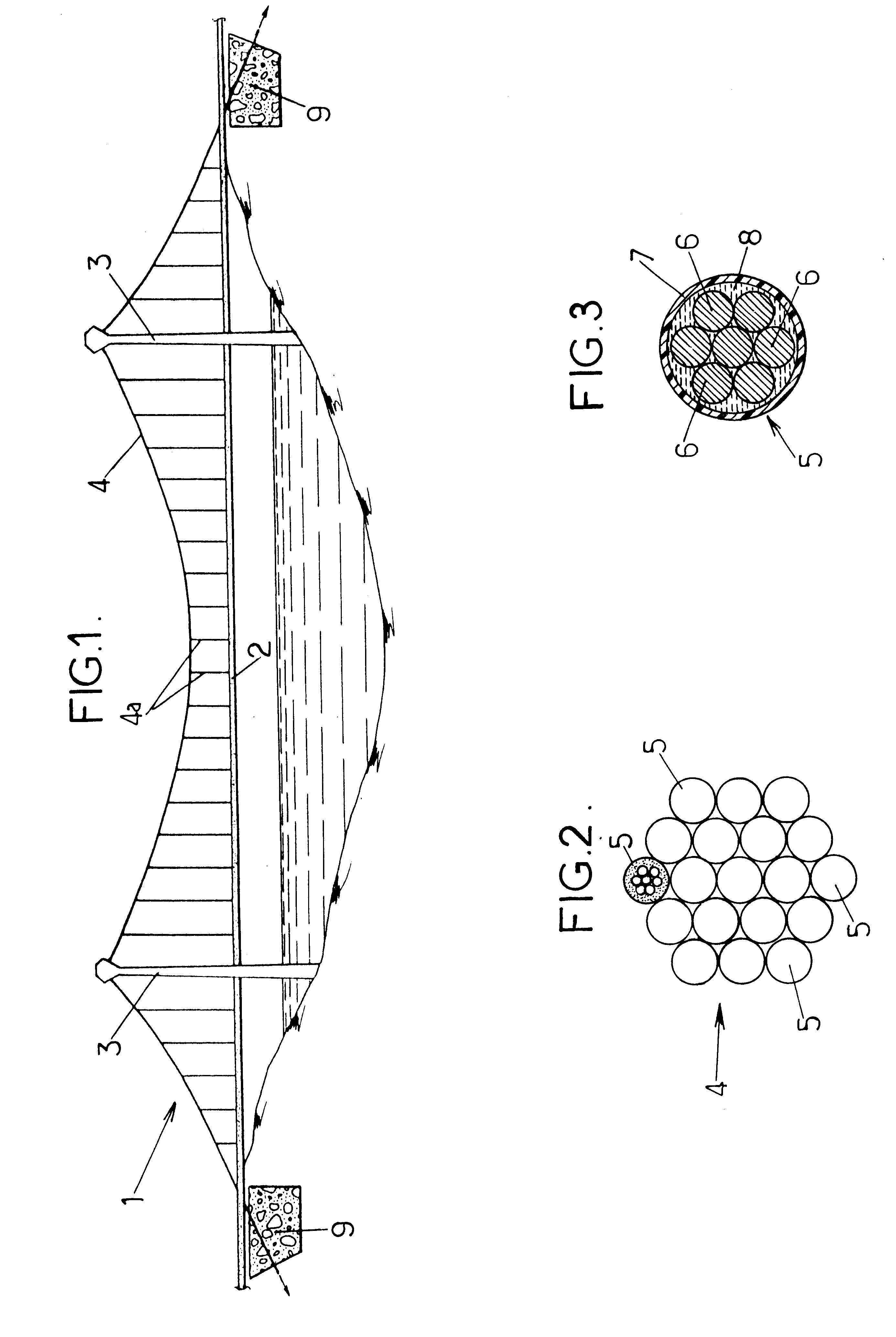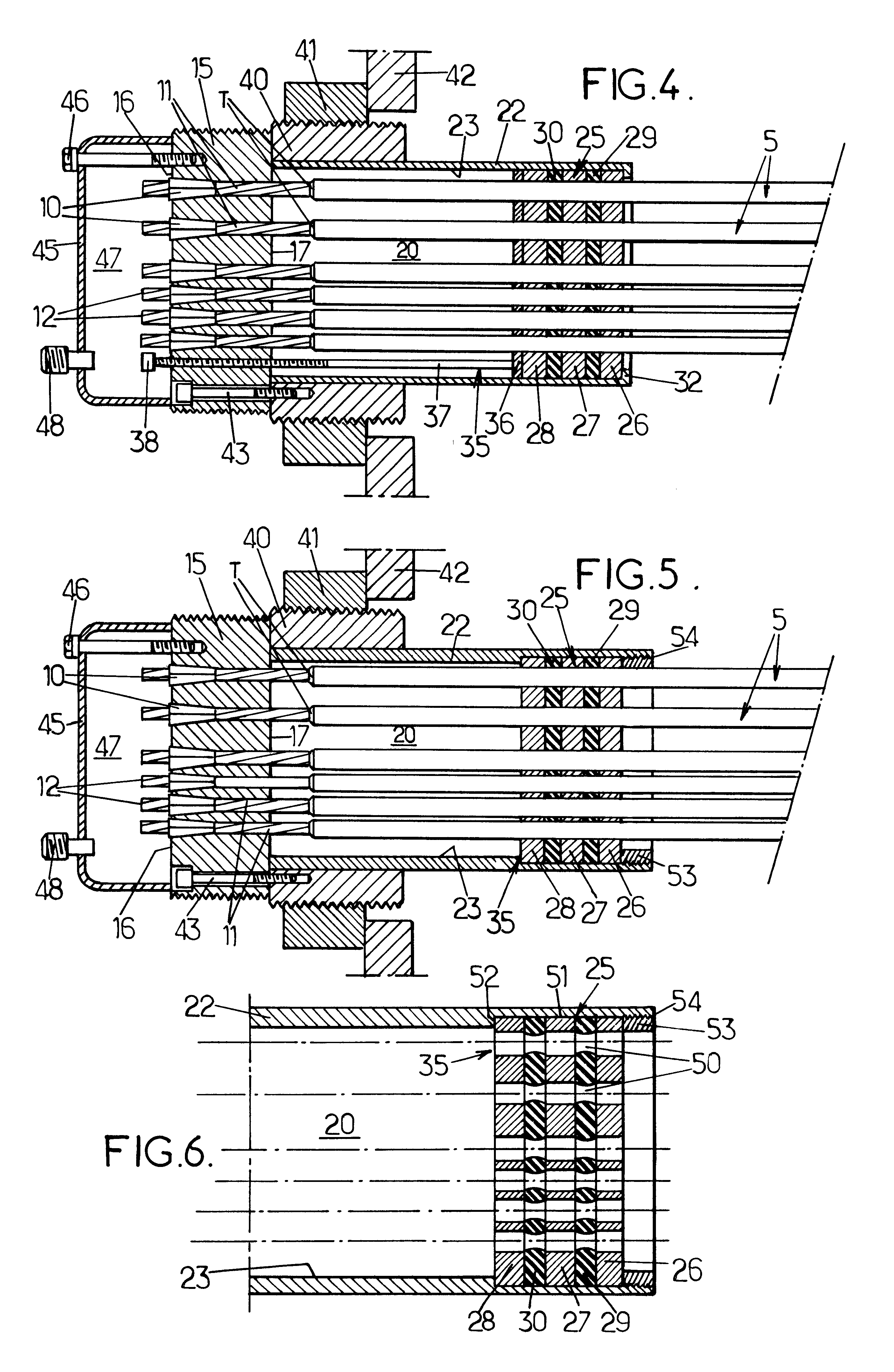Anchoring device for fixing a structural cable to a building element
a technology for fixing devices and structural cables, which is applied in the direction of bridges, rod connections, manufacturing tools, etc., can solve the problems of significant and expensive maintenance operations of anchoring devices such as these, and the operator is not accessibl
- Summary
- Abstract
- Description
- Claims
- Application Information
AI Technical Summary
Benefits of technology
Problems solved by technology
Method used
Image
Examples
first embodiment
In the first embodiment depicted in FIG. 4, the bearing means 35 consist in an insert plate 36 which is perforated and pressed against the inner plate 28 and in threaded rods 37 (just one being depicted in FIG. 4). The threaded rods adopt the shape of screws each equipped with a head 38.
A first end of the threaded rod or screw 37 presses against the insert plate 36 while the second end of the rod 37 passes through a tapped hole 12 formed in the perforated block 15 so that the head 38 projects from the outer face 16 of this block. The threaded rod 37 can be operated by means of the head 38 to be screwed through the tapped hole.
The insert plate 36 is pushed back by the screwing of the threaded rods or screws 37. During this compression, the insert plate 36 moves the inner plate 28 closer to the outer plate 26 which itself remains stationary.
In order to immobilize the perforated block 15 with respect to the anchoring block 9, an adjusting tube 40 is mounted secured to the outer face of...
second embodiment
The second embodiment depicted in FIGS. 5 and 6 differs from the previous embodiment only in the form of the bearing means 35, the diameter of the passages formed in the pieces of packing 29 and 30, and the opposite end of the tube to the anchoring block.
The strands 5 are inserted in the pieces of packing 29 and 30 through passages 50 which have a diameter slightly smaller than that of the sheath 7 of the strands 5. In addition, a groove 51 is formed at the opposite end of the tube 22 to the anchoring block 15. The tube 22 thus has, at its end, a portion of inside diameter greater than the inside diameter of the rest of the tube. A step 52 is defined by this change in diameter. The three perforated plates 26 to 28 and the pieces of packing 29 and 30 are inserted in this groove 51 via the end of the tube 22. The plates and the pieces of packing are in abutment against the step 52 and are kept in compression against one another by means of a stop sleeve 53. This sleeve is attached to ...
PUM
| Property | Measurement | Unit |
|---|---|---|
| thickness | aaaaa | aaaaa |
| diameter | aaaaa | aaaaa |
| tension | aaaaa | aaaaa |
Abstract
Description
Claims
Application Information
 Login to View More
Login to View More - R&D
- Intellectual Property
- Life Sciences
- Materials
- Tech Scout
- Unparalleled Data Quality
- Higher Quality Content
- 60% Fewer Hallucinations
Browse by: Latest US Patents, China's latest patents, Technical Efficacy Thesaurus, Application Domain, Technology Topic, Popular Technical Reports.
© 2025 PatSnap. All rights reserved.Legal|Privacy policy|Modern Slavery Act Transparency Statement|Sitemap|About US| Contact US: help@patsnap.com



